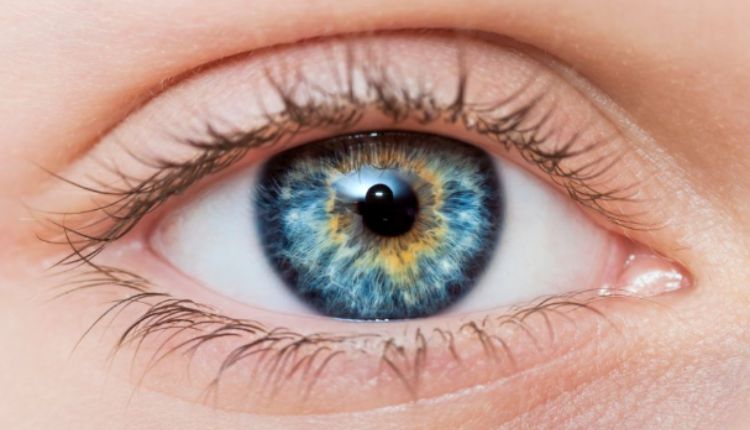Table of Contents
- Everyday Eye Strain: Why It Happens
- Signs Your Eyes Need Rest
- Daily Habits for Eye Comfort
- Screen Time and Digital Eye Strain
- The 20-20-20 Rule Explained
- Refreshing Eye Exercises Anyone Can Try
- How Sleep Affects Eye Health
- Tips for Setting Up an Eye-Friendly Space
- Final Thoughts on Protecting Your Vision
Everyday Eye Strain: Why It Happens
In our screen-dominated world, blurred vision and eye strain are shared, with adults averaging over seven hours on devices daily. The CDC reports rising vision problems related to screen time. Eye strain can linger and impact long-term eye health. For those seeking relief without sacrificing productivity, learning how to rest your eyes without falling asleep can be a game-changer.
Simple changes in daily habits, schedule, and mindful breaks give your eyes time to recover, leaving you more refreshed and focused. Focusing on distant objects, blinking regularly, or practicing gentle eye massages can help reduce strain. Creating an environment with proper lighting and minimizing glare supports eye comfort throughout the day. Whether at your desk or on the couch, planning for eye care can enhance comfort, preserve vision, and reduce the risk of more serious complications.
Signs Your Eyes Need Rest
Knowing when your eyes need a break can save you from more severe discomfort. Many notice stinging, itchiness, or relentless watering after working or studying for a few hours. Other telltale clues include headaches that start behind the eyes, blurred or double vision when looking away from a screen, and increasing sensitivity to overhead lights or sunlight. Sometimes, your eyelids might feel heavy, or you might rub your eyes more than usual. These aren’t simply nuisances— but subtle signals that your visual system is working overtime. When ignored, these symptoms can escalate and even compromise your productivity or mood throughout the day.
Pay attention to how your eyes and head feel after long visual tasks. Are you searching for words or frequently losing your place in text? Do lights seem more glaring, or do you squint to bring things into focus? Treat these small changes as reminders that your eyes need care, just as joints and back muscles would after hours of repetitive use. By respecting your body’s signals, you can proactively build healthier routines for your vision.
Daily Habits for Eye Comfort
Simple, consistent habits can make a big difference in maintaining comfortable and resilient eyes. One often overlooked but crucial action is blinking. When you’re intensely focused, your blink rate tends to drop, which can cause dryness and irritation. Make a conscious effort to blink regularly, especially during long periods of screen time or intense concentration.
Staying well-hydrated is another key factor. Your body sends clear signals when it needs water, and insufficient hydration can lead to dryness in your eyes and skin. Drinking water throughout the day helps maintain healthy tear production and keeps your eyes moist.
Nutrition also plays a vital role in eye health. Incorporate foods rich in leafy greens, vibrant fruits, carrots, and omega-3 fatty acids into your meals. These nutrient-packed options—like spinach, blueberries, sweet potatoes, and salmon—are loaded with essential vitamins A, C, and E, which support tissue repair and help prevent age-related eye changes.
Take mini breaks every 30 to 60 minutes during focused work or study to further reduce eye strain. Working in softly lit environments minimizes squinting and glare, reducing discomfort. Additionally, adjusting your desk height and positioning digital screens 15 to 20 degrees below eye level eases the load on your eye muscles.
Surprisingly, these minor adjustments quickly add up, leading to healthier, happier vision and lasting eye comfort.
Screen Time and Digital Eye Strain
Most adults and children today interact with screens for longer periods than ever before. Extended use does not cause “digital eye strain” but can cause neck and shoulder stiffness, prolonged focus, and poor posture. A survey by the Vision Council found that nearly 60% of American adults report experiencing symptoms of digital eye strain, not just at work but also in leisure time at home. Common complaints include dry, gritty sensations, unexplained headaches, difficulty concentrating, and sore areas around the temples and eyebrows.
As the American Academy of Ophthalmology outlines, making even minor changes to screen settings sets the stage for relief. Increasing font size, boosting contrast, and enabling blue light filters can all help, as can switching your device to “night mode” during evening hours. It’s also crucial to position screens so natural daylight isn’t shining directly in your eyes and to use matte screen covers that limit glare. Each adjustment creates a smoother viewing experience, letting your eyes perform more efficiently and comfortably.
The 20-20-20 Rule Explained.
The 20-20-20 Rule is simple and powerful—a game-changer for anyone glued to a desk or computer all day. Every 20 minutes, you look away from your screen for 20 seconds, focusing on something at least 20 feet in the distance. This intentional pause gives overworked eye muscles a chance to reset and can substantially decrease symptoms of fatigue. While it sounds easy, setting reminders can help you remember, especially on busy days. For people in fast-paced environments, try pairing the Rule with another activity, such as standing up to stretch or taking a sip of water, to reinforce regular breaks further.
Many office workers and students find that, af these breaks become second nature, a week or two, physical and mental clarity also improves, making it easier to maintain energy and motivation through long tasks. The Rule may appear trivial, but long-term adherence can offer significant protective benefits for your vision.
Eyebrow embroidery is a semi-permanent cosmetic technique that enhances the shape and fullness of your brows. It provides natural-looking results, saving time on daily makeup routines.
Refreshing Eye Exercises Anyone Can Try
Just as the body appreciates a gentle stretch, so do your eyes. Eye exercises only take a minute but can bring immediate relief—no equipment or special skills required. Begin with slow, circular eye movements, keeping your head still while your eyes trace imaginary circles. Next, try “distance focusing”: alternate your focus between a finger held close and a faraway object, repeating several times to engage both near and far focus. Another well-loved move is “palming”—rub your palms together to create warmth and gently cup them over closed eyes. The darkness and warmth can soothe and refresh, especially during moments of tension.
For those frequently at screens, try these movements before meetings or study sessions to prime your vision. Eye exercises shouldn’t cause pain; if any motion feels uncomfortable, pause and consider consulting an eye care provider.
How Sleep Affects Eye Health
Sleep is the ultimate recovery tool—not just for your brain and muscles, but also for your eyes. During deep sleep, your eyes can repair the tear film, restore hydration, and clear out irritants that accumulate during the day. The effects of poor sleep often show up as morning itchiness, soreness, or even eyelid twitching. Chronic lack of rest can result in blurry vision or increased light sensitivity, making it harder to stay productive or comfortable. Adults should target seven to nine hours per night, while teens and children may require even more for optimal eye health.
Build an eye-friendly sleep routine by removing contact lenses before napping or sleeping, keeping the bedroom dim and free from screens, and using a humidifier if the air is dry. These small lifestyle habits can make a noticeable difference in how refreshed your eyes feel in the morning. If you’re experiencing yellowing of the skin or eyes, it’s important to book your jaundice treatment today for early diagnosis and effective care. Timely medical attention can prevent complications and speed up recovery.
Tips for Setting Up an Eye-Friendly Space
Environmental tweaks can instantly boost eye comfort—no overhaul needed. Place screens at arm’s length and a few inches below your direct line of sight to keep eye muscles relaxed. Manage glare using curtains, blinds, or positioning screens away from direct sunlight. Replace stark overhead bulbs with lamps that diffuse light, bright enough to prevent squinting but gentle enough to avoid harshness: clean monitors and device screens regularly, as dust and fingerprints can create additional glare and focus problems.
- Keep a small bottle of artificial tears on hand for quick relief, especially if your workspace is air-conditioned or heated.
- Add an air humidifier to maintain healthy moisture in dry environments.
- Encourage regular screen breaks during meetings or long projects for everyone’s eyes.
These small details in your workplace or home office can radically transform your daily eye comfort and keep you productive without sacrificing vision health.
Final Thoughts on Protecting Your Vision
The path to healthy, resilient vision is paved with small, repeatable habits rather than major overhauls. From adjusting digital habits with the 20-20-20 Rule to focusing on how to rest your eyes without falling asleep, every step takes you closer to lasting comfort. Listening to your body, adjusting your surroundings, and committing to regular breaks all help keep your eyes in top condition.
Even if your schedule is packed, there is always room for an extra blink, a stretch, or a pause to focus on something far away. Investing in these daily rituals supports eyes and concentration, mood, and long-term health. For further ideas on supporting daily vision wellness, review research and guidance from reputable sources like the Centers for Disease Control and Prevention and the American Academy of Ophthalmology as part of your commitment. Simple changes, made consistently, can lead to a future of clear and comfortable vision.






